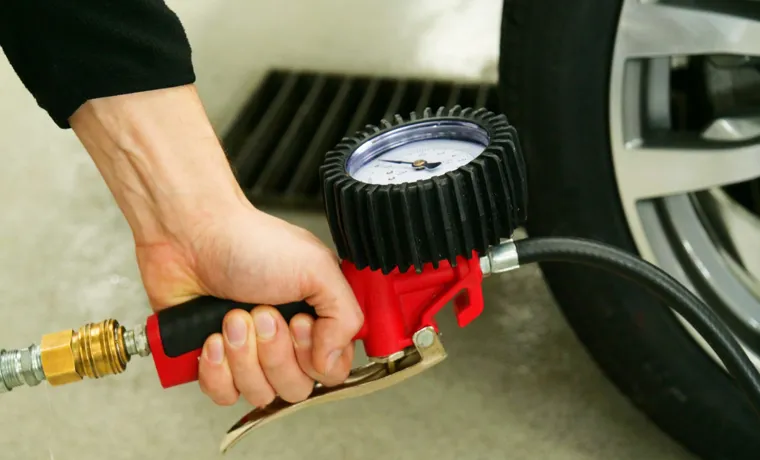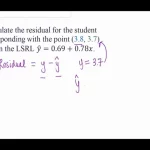Have you ever been driving down the road and noticed that your tire pressure warning light has come on? It’s an annoying situation, but it’s one that can’t be ignored. A faulty tire pressure sensor can cause problems with your vehicle’s handling and fuel efficiency, so it’s important to take care of the issue as soon as possible. Fortunately, fixing a tire pressure sensor fault is a relatively simple task that can be done by anyone with a bit of basic mechanical knowledge.
In this article, we’ll go over the steps you can take to fix a tire pressure sensor fault and get back on the road in no time.
Table of Contents
Understand the Tire Pressure Monitoring System (TPMS)
If you’re wondering how to fix tire pressure sensor faults, you’ll first need to understand the Tire Pressure Monitoring System (TPMS). This system is designed to automatically monitor the air pressure inside your tires and alert you when it falls below a certain threshold. TPMS typically uses sensors that are attached to each wheel’s valve stem or are integrated into the wheel hub.
When the pressure drops below the specified level, the sensors send a signal to the car’s computer system, which may trigger a warning light on the dashboard. In some cases, the system may also display a message indicating which tire is low on pressure. If you’re experiencing a sensor fault, it’s best to bring your car to a trusted mechanic who can diagnose and repair the problem.
Replacing a faulty sensor may be necessary to ensure the accuracy of the system. Remember, properly inflated tires not only keep you safe but also improve fuel efficiency and save you money in the long run.
Know What the Warning Light Means
If you see a warning light on your dashboard that looks like a tire with an exclamation point inside, it’s time to check your tire pressure. This warning light is part of the Tire Pressure Monitoring System (TPMS), which is designed to alert you when your tire pressure is too low. Keeping your tires properly inflated not only improves fuel efficiency, but also ensures your safety while driving.
It’s important to understand how your TPMS works, so you can respond appropriately to warning lights. Some TPMS systems use sensors on each tire to monitor pressure, while others use the car’s anti-lock brake system to detect changes in wheel speed that can indicate low pressure. Regardless of the system your car uses, it’s important to know what kind of warning light will appear, and what actions you need to take to resolve the issue.
So, next time you see the tire pressure warning light, don’t ignore it – take the time to check your tires and ensure your safety on the road.

Check the Tire Pressure Manually and Compare with TPMS Reading
Understanding TPMS is crucial to ensuring your safety on the road. It is a system that monitors the tire pressure and informs the driver if the pressure drops below the recommended level. However, it is important to understand that TPMS only detects low tire pressure, not overinflation or uneven pressure.
Therefore, it is necessary to manually check the tire pressure using a tire gauge and compare it with the TPMS reading. It is also essential to note that TPMS sensors require a battery, which might degrade with time and affect their accuracy. Hence, it is essential to replace the sensors every five to ten years, depending on the manufacturer’s recommendation.
Maintaining the correct tire pressure is essential for optimal performance, fuel efficiency, and safety. An under-inflated tire can cause tread wear and overheating, leading to a blowout, while over-inflation can cause the tire to bounce and skid, leading to a loss of control. By understanding TPMS and manually checking the tire pressure regularly, you can ensure that your tires are in good condition, keeping you and your passengers safe on the road.
Reset the TPMS
If you’re having trouble with your TPMS (Tire Pressure Monitoring System), a simple reset may do the trick. When a tire pressure sensor fault message appears on your car’s dashboard, it can be quite frustrating. The good news is that most modern cars have a reset button that can be located in your glove compartment or on your dashboard.
Look for a button that has ‘TPMS’ or ‘Reset’ labelled on it, press and hold it for a few seconds until the car’s warning light flashes twice. With this, your TPMS has been reset. However, if the tire pressure sensor fault keeps recurring, then you might want to consider visiting a mechanic or a tire repair shop to have the issue diagnosed and fixed.
Regularly maintaining your tires and ensuring they are properly inflated can also help prevent TPMS issues and keep your vehicle running smoothly. Remember, a safe car is a happy car.
Use the Reset Button on the Dashboard
If you’re looking to reset the TPMS on your dashboard, you may be wondering where to start. Luckily, there’s a reset button right on your dashboard that can do the trick. Simply locate the button, which is often labeled “TPMS” or “reset,” and hold it down until the indicator light on your dashboard flashes.
This may take a few seconds, but don’t worry, your car’s manual should have more detailed instructions. Once the light stops flashing, you can release the button and the TPMS should be reset. This will clear any previous TPMS codes and allow your car to start fresh.
Keep in mind that you may need to reset the TPMS periodically, especially if you’ve recently changed your tires or performed other maintenance on your car. By utilizing the reset button on your dashboard, you can take care of this task quickly and easily, without the need for a mechanics visit. So go ahead and give it a try!
Drive the Vehicle for 10 Minutes After Reset
If you notice the tire pressure monitoring system (TPMS) warning light flashing on your dashboard, don’t fret. It happens to the best of us. Fortunately, resetting the TPMS is straightforward.
The first step is to turn on your vehicle. Locate the reset button, typically located under the steering wheel. Hold the button until you see the TPMS light blinks – this means the system has been reset.
However, it’s essential to drive your vehicle for at least ten minutes after resetting the TPMS. Doing so ensures that the system can recalibrate itself accurately to gauge the tire pressure levels. If the TPMS light continues to flash after the recalibration process, you may need to check your tires for damage or punctures.
Remember, regular tire maintenance is essential to prolonging the life of your tires and keeping your vehicle in optimal condition.
Consider Replacing the TPMS Sensor Battery
TPMS sensor battery If you’re experiencing issues with your vehicle’s tire pressure monitoring system (TPMS), it might be time to replace the TPMS sensor battery. These batteries typically last between 5-7 years, so if your vehicle is older than that, it’s likely time to replace them. A dead or dying TPMS battery can cause your TPMS to malfunction or not work at all, causing potential safety issues while driving.
Replacing the battery is a quick and easy fix that can save you the hassle of dealing with faulty tire pressure readings. Once you’ve replaced the battery, make sure to reset the TPMS system to ensure accurate readings. By doing this, you’ll ensure that your vehicle is functioning properly and keeping you safe on the road.
Seek Professional Help
If you have tried all the DIY methods to fix your tire pressure sensor fault, it might be time to seek professional help. Tire pressure sensors are a significant part of modern automobiles and can often be tricky to diagnose and fix. A qualified mechanic can easily identify the root cause of the issue and fix it with their expertise.
Attempting to fix a tire pressure sensor fault without proper knowledge and tools can result in further damage to your vehicle. Plus, it could make the issue even more complicated, eventually leading to costly repairs. With professional help, you can have peace of mind that your car is in the best possible shape.
Don’t hesitate to take your vehicle to a licensed mechanic who can diagnose and fix your tire pressure sensor fault quickly and efficiently. It may cost you a little time and money now, but it will be worth it in the long run to have your car running smoothly and safely.
Visit a Tire Service Center or Dealership
When it comes to your vehicle’s tires, it’s always best to seek professional help. Visiting a tire service center or dealership can ensure that the job is done right the first time. A professional technician can perform necessary checks and maintenance, such as tire rotations, balancing, or even replacing worn or damaged tires.
They can also provide expert advice on choosing the right type of tire for your vehicle and driving habits. While there are many online resources available for tire information, nothing beats the expertise of a professional. Think of it like going to a doctor when you’re sick – you wouldn’t trust a quick Google search over the advice of a trained professional, would you? So, next time you have questions or concerns about your vehicle’s tires, don’t hesitate to seek out the advice of a tire service center or dealership near you.
They’ll have you back on the road safely and confidently in no time.
Allow the Technician to Diagnose and Fix the Issue
If you’re dealing with a technical issue that you can’t seem to solve on your own, it’s always best to seek the assistance of a professional technician. By allowing an expert to diagnose and fix the issue, you’re ensuring that it’s properly resolved, and you’re minimizing the risk of further damage. Even if you have some knowledge in the area, a skilled technician can provide additional insights and a fresh perspective that may allow them to identify the root cause of the issue more effectively.
It’s always tempting to try and fix things yourself, but sometimes it’s just better to call in a professional. Don’t be afraid to admit when you’re out of your depth, and don’t hesitate to seek help from an experienced technician. In the long run, it could save you time, money, and a lot of stress.
Remember, seeking professional help is a sign of intelligence, not weakness.
Conclusion
In conclusion, fixing a tire pressure sensor fault is as easy as ABC! All you need to do is be proactive in keeping your tires inflated to the recommended pressure, ensure that your sensors are free from debris and damage, and routinely check and reset your sensors. With these simple steps, you’ll have your car running smoothly and your tire pressure sensor working like a charm. So, take control of your sensor fault and put the pedal to the metal with confidence!”
FAQs
What are the common symptoms of a tire pressure sensor fault?
The most common symptoms include a warning light on the dashboard, inaccurate tire pressure readings, and difficulty in maintaining tire pressure.
Can a tire pressure sensor fault be fixed by simply adding air to the tires?
No, adding air to the tires will not fix the sensor fault. A professional inspection and repair of the sensor or its components may be required.
How often should tire pressure sensors be replaced?
Tire pressure sensors typically last 5-7 years or around 100,000 miles. However, if a fault is detected, immediate repairs or replacement may be necessary.
Is it possible to drive with a tire pressure sensor fault?
Yes, it is possible to drive with a tire pressure sensor fault, but it is not recommended. Driving with a fault may harm the sensor or other components and can compromise the safety of the vehicle.
Can a tire pressure sensor fault cause a flat tire?
No, a tire pressure sensor fault cannot cause a flat tire, but it can lead to serious safety issues if left unaddressed. Regular inspection and maintenance of tire pressure sensors can prevent flat tires and other safety hazards.
How much does it cost to fix a tire pressure sensor fault?
The cost of fixing a tire pressure sensor fault depends on the type and severity of the fault, as well as the make and model of the vehicle. Generally, repairs can range from $50-$250.
Can a DIY approach be taken to fix a tire pressure sensor fault?
While some minor repairs may be possible with a DIY approach, fixing a tire pressure sensor fault often requires specific tools and expertise. It is typically recommended to seek professional advice and service.



